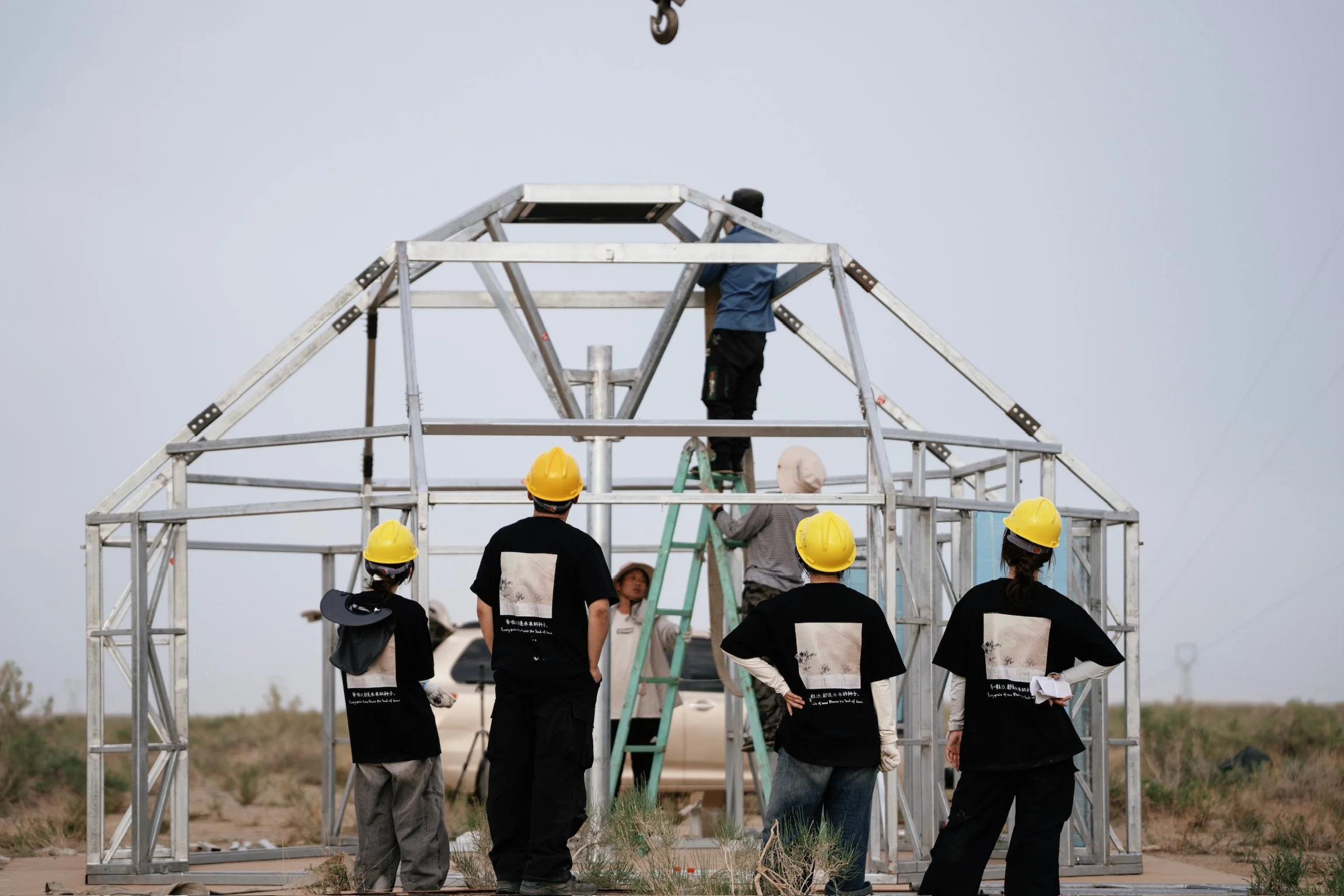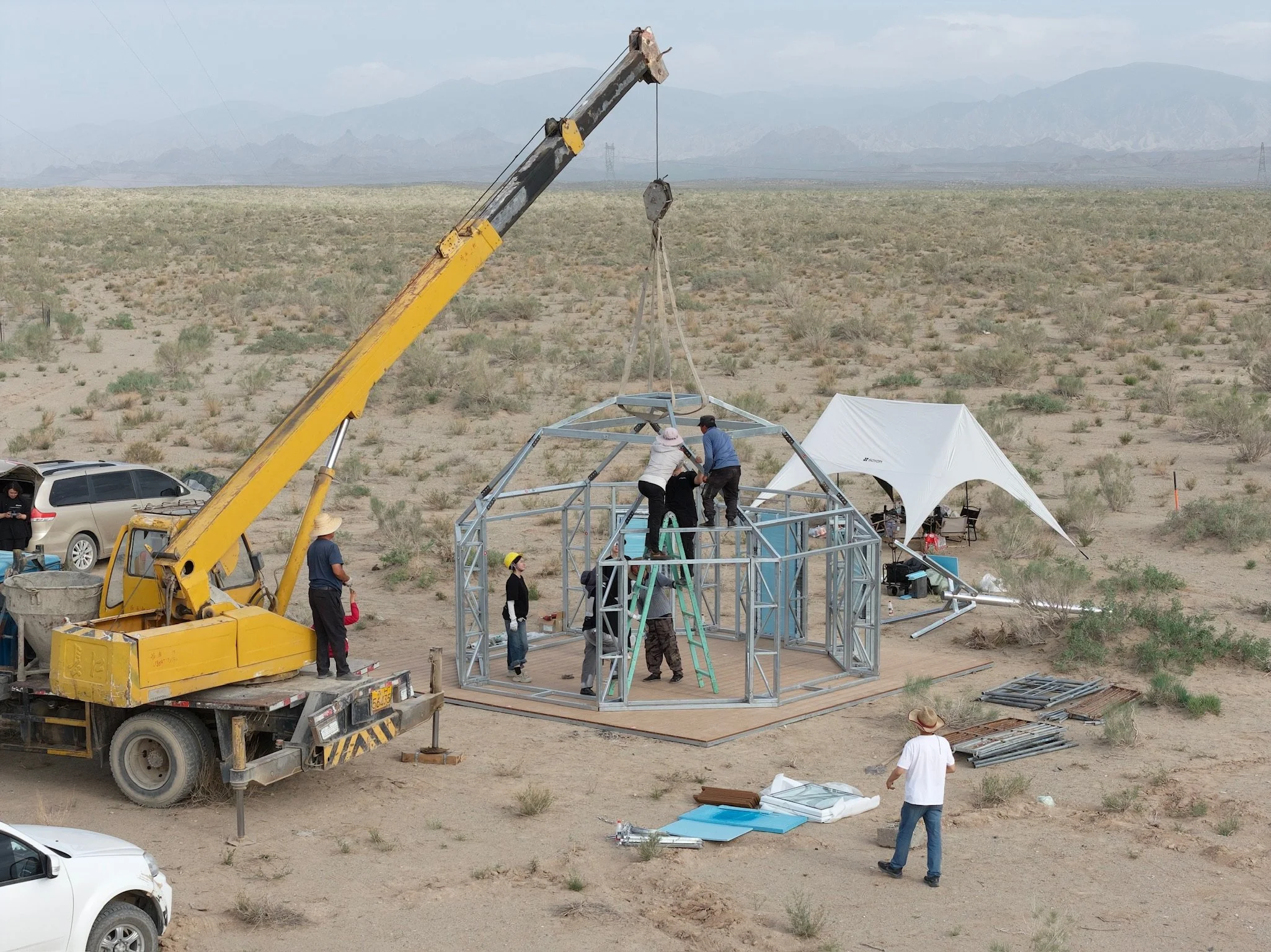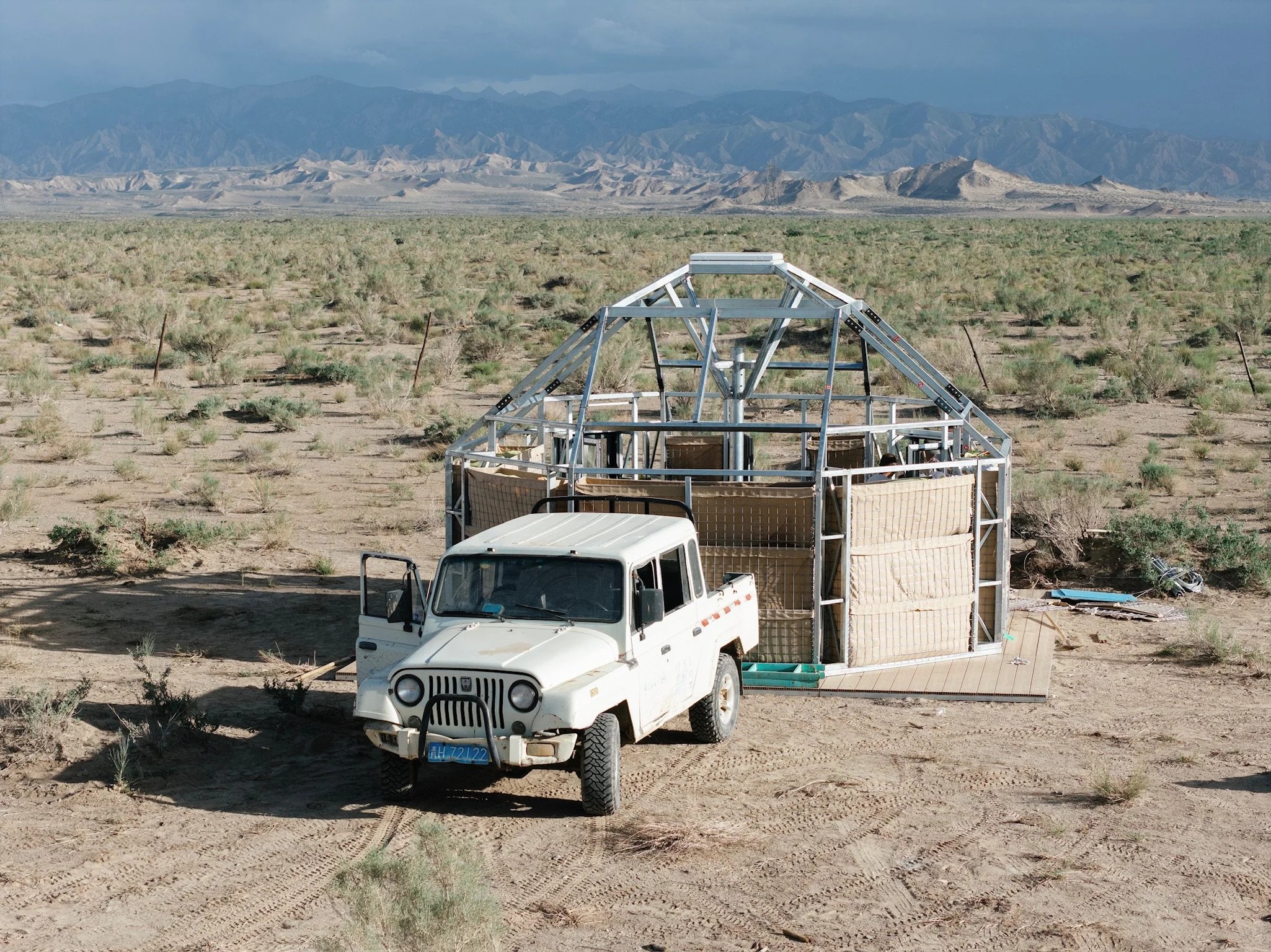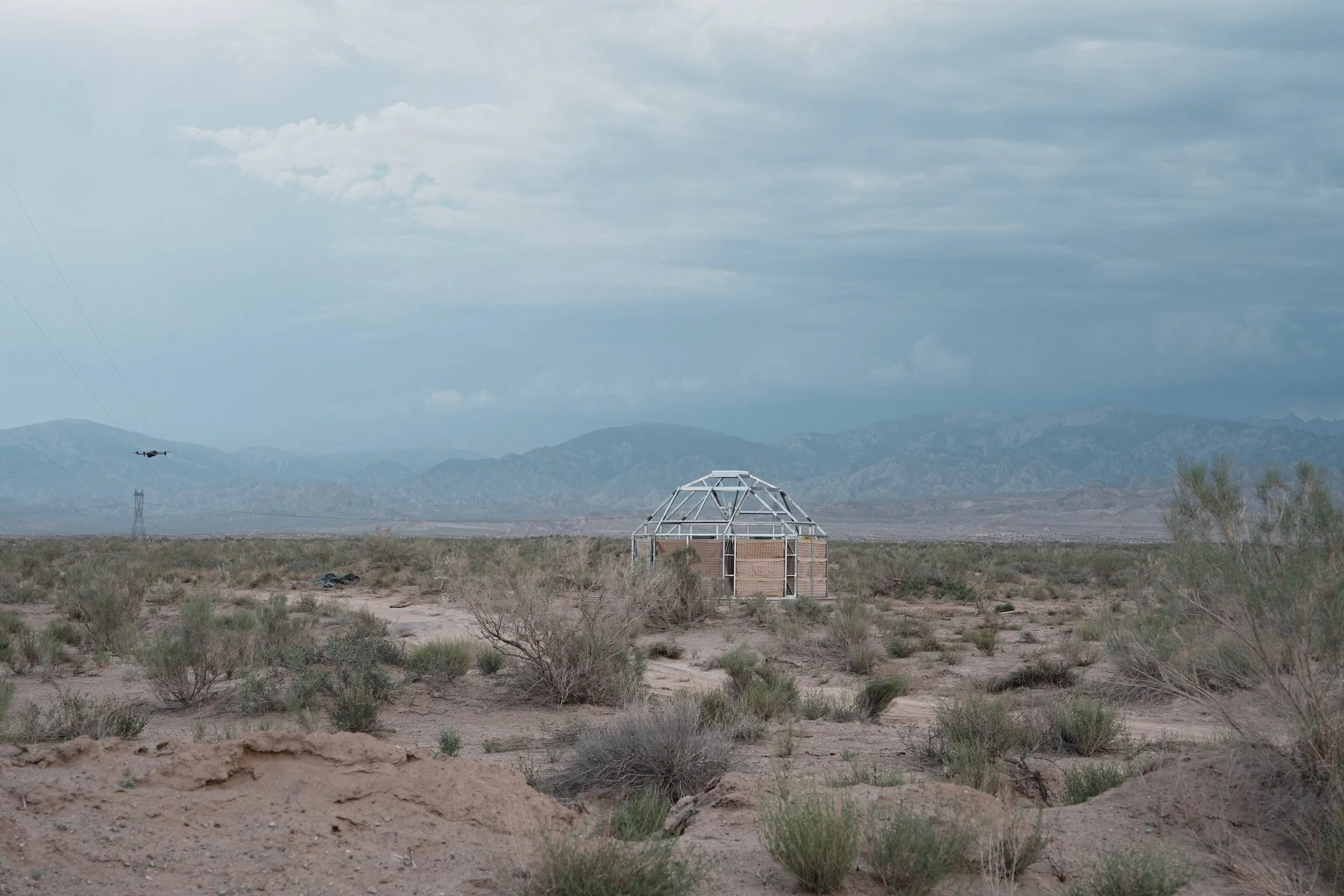From Concept to Reality: Building Solar Decathlon Yurt Prototype in Qinghai
This summer marks an exciting milestone for ResilienSEED: we are bringing our award-winning design from the U.S. Department of Energy Solar Decathlon into the real world. Our project, which reimagines the traditional Mongolian yurt as a zero-carbon, mobile dwelling, is now under construction in the desert of Qinghai, China.
Why Build Here?
The Qinghai desert grasslands are a fragile ecosystem where herding families face harsh climate challenges—bitter winters, scorching summers, and sandstorms. The traditional yurt has served these communities for generations, offering mobility and resilience. Our goal is to honor this cultural wisdom while integrating modern sustainability technologies, creating a shelter that is both rooted in tradition and ready for the future.
Building with the Community
What makes this process truly meaningful is collaboration. Working side by side with local craftsmen, we combined their practical knowledge of the land with modern engineering methods. Together, we assembled the prefabricated steel structure on site, ensuring durability, efficiency, and climate resilience in a challenging environment.
Design Meets Craft
Our design keeps the essence of the yurt with its circular form, modular framework, and symbolic patterns, while adding energy-efficient systems:
Solar Roof: Flexible thin-film photovoltaic panels power daily needs.
Thermal Storage: Modular sandbag walls serve as thermal mass, stabilizing indoor temperatures and enhancing comfort.
Prefabricated Structure: A prefabricated steel frame ensures durability, quick assembly, and mobility without compromising aesthetics.
A Living Laboratory
This prototype is not just a structure; it’s an experiment in adaptive architecture. Over the coming months, we will monitor its energy performance, insulation efficiency, and overall livability. Our goal: create a model for low-carbon housing in extreme climates, empowering communities to live sustainably without losing their cultural identity.
Stay tuned as we share updates on construction progress and field testing. This is only the beginning of our journey to merge ecological restoration, cultural continuity, and cutting-edge design.




